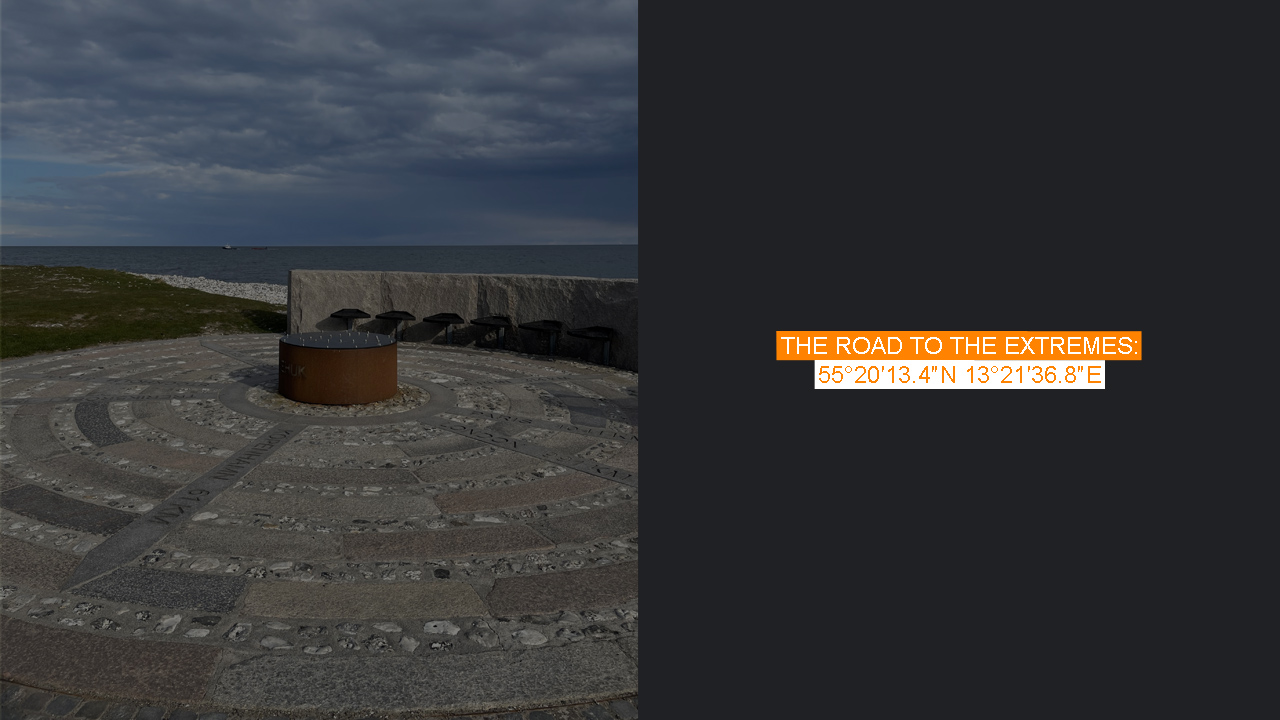If I told you that from this point it’s 61 kilometers to Copenhagen, 991 kilometers to London, 1041 kilometers to Paris, 510 kilometers to Stockholm, 1572 kilometers to the Three-Country Cairn, 1524 kilometers to Moscow, and 314 kilometers to Berlin, could you guess where I am? As the title reveals, the correct answer is indeed Smygehuk, the southernmost point of Sweden.
Smygehuk is an easily accessible and relatively popular destination, drawing thousands of visitors every year. However, I can’t help but wonder: has anyone else flown into Kastrup Airport in Copenhagen and then taken public transportation just to reach this point? I had booked a rental car, but only from 7 pm onward, so I had planned to rely on public transportation to reach both Smygehuk and Sweden’s lowest point and still make it back to Kastrup on time. Not that it’s the end of the world for the schedule; they’ve promised to keep it for me until I arrive.
Now, this may sound like an easy task on a map, but as the crow flies, it’s still about 90 kilometers between these two places—and trains and buses don’t exactly take the most direct routes. The journey from Kastrup to Smygehuk alone takes around one and a half to two hours, involving two trains and a bus. The first leg of the trip, from Kastrup to Malmö, involves taking the Öresundståg, a train that crosses the famous Öresund Strait. The issue is that even though I’m off, something urgent requires my attention, so I need to spend the journey on the phone. Throughout the Öresund Strait, the connection disappears in the middle of my Teams call with a colleague in London. But what wouldn’t we lawyers do to keep clients happy, right?
From Malmö, I transfer to a regional train that winds its way through the picturesque Skåne landscape. It’s spring, and there’s a definite feeling of the approaching summer in the air—much more so than in Stockholm or Helsinki.
The regional train’s final stop is in Trelleborg, the southernmost town in Sweden. Trelleborg is also the second-largest seaport in the country, after Gothenburg, with many ferry connections to Poland and Germany.
My first problem arises in Trelleborg when the bus I need to catch doesn’t seem to be leaving on time. Missing a connection would throw off my whole schedule, so I’m relieved when the yellow bus finally arrives. We travel along the scenic coastal route, and after about 30 minutes, the bus reaches Smygehuk Hamnen .
It’s spring, and although there doesn’t seem to be much activity at this little tourist spot, I can easily imagine it being much more lively in the summer months—people enjoying ice cream and soaking up the Swedish sunshine. But today, nothing is open. It’s just an empty parking lot, and I have the whole place to myself. The weather is relatively nice, and I actually prefer it this way—no crowds, just me on my adventure.
Smygehuk is a small harbor with a few boats, sheltered by a breakwater. I walk toward it first, and then make my way to the actual southernmost point of Sweden. There’s a sign with coordinates and distances to various places, with arrows on the ground indicating directions. Looking south, I can imagine that Germany is just 70 kilometers away across the sea. On a perfectly clear day, it should be possible to see that far, but since the area and much of Skåne are at sea level, I have to use a bit of imagination to believe that Germany is actually there. A few windmills are visible on the horizon, but that’s nothing out of the ordinary for this part of Sweden.
The lighthouse nearby seems to be a popular spot for tourists. It hosts events like Sweden’s southernmost Allsång (a traditional sing-along event) and art exhibitions, among other activities. Unfortunately, I don’t have time to explore the surroundings in more detail, and, truth be told, nothing is open at this time of year anyway.
Having seen what I came for, it’s time to continue my day trip. I head back to the bus stop, where there are markers that I need to use to signal the bus. I make sure I’m standing in the right spot so the bus will actually stop—nothing would be worse than watching it drive past. Just then, I hear some engine noise and glance in the opposite direction. Two young guys zoom by in a Ferrari and a Porsche—definitely a sign that spring has arrived.

